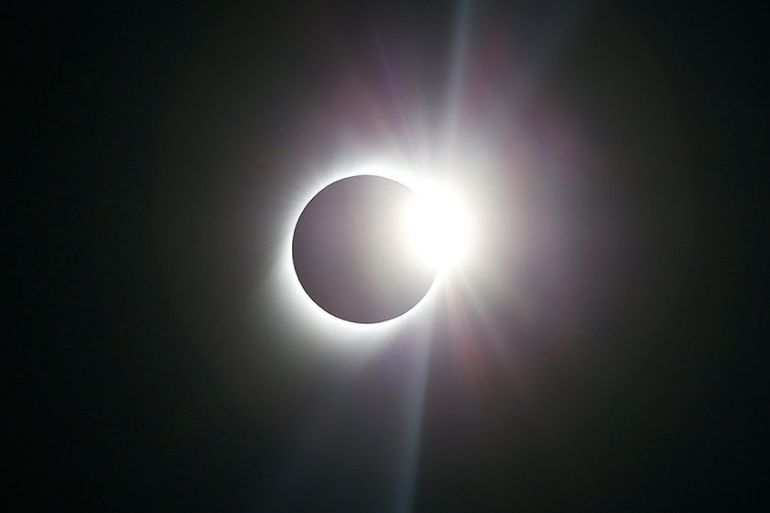Total eclipse enthralls South America
Sky-gazers rush to Latin America as they enjoy the first total eclipse since the US solar eclipse of August 2017.

In South America the skies darkened on Tuesday as skygazers enjoyed the first total eclipse since the solar eclipse in the United States of August 2017.
The view of totality was only seen by a few tiny Southern Pacific islands, and a small strip of South America about 150km wide, over Chile and Argentina. However, a partial eclipse could be seen over the rest of South America and Central America.
Keep reading
list of 4 itemsAfter the Hurricane
World’s coral reefs face global bleaching crisis
Why is Germany maintaining economic ties with China?
Over the past few days, eclipse chasers have poured into the major transport hubs of Buenos Aires and Santiago.
Argentina’s capital was just on the edge of the total eclipse path, but because it would take place so near sunset and because there was a large chance of clouds spoiling the view, the majority of those who landed in Buenos Aires travelled west away from the coast.
One of the most popular places in Argentina to see the solar spectacle was San Juan, which has very few clouds at this time of year. The full show of the eclipse in the province started around 4:20pm local time (17:20 GMT), when the sun was still high in the sky.
The city of San Juan, with a population of 100,000, saw a huge influx of tourists, many of whom had already seen a number of eclipses in other parts of the world.
Hire cars sold out and hotels were at full capacity. Some locals were charging as much as $400 per person per night for a shared dormitory, for a minimum of three nights, albeit with food included, prompting the San Juan government to warn people not to overinflate their prices.
Although San Juan city did see a total eclipse, it only lasted seven seconds, so in the morning a convoy of eclipse-hunters headed north towards the centre of the spectacle, where the eclipse would last longer.
Coaches and cars filled the narrow roads, which on a normal day would be practically deserted.
A special viewing stage was set up in the town of Bella Vista, 180km from San Juan city, which was at the centre of the eclipse’ path.
Thousands of people crowded into the area, which had a festival atmosphere.
For the last 10km before the town, roadsides were dotted with tourists, who set up camp for the afternoon, with tripods and cameras and some were complete with camping chairs and barbeques.
As the moon nibbled the sun, the temperature dropped noticeably. Sky-gazers, who were initially wearing t-shirts, had to wrap up in thick winter coats. The wind, which had been blowing enthusiastically until this point, started to drop.
When the sun was completely obscured by the moon, during what’s known as totality, only the outermost ring of the sun, the coroner, was visible. This image is the spectacle that stays in people’s minds forever and a photo can never do it justice.
Eclipses can only happen during a new moon, when our orbiting moon moves between the Earth and the Sun. However, it doesn’t usually cause an eclipse because the moon is usually too far above or below the sun to get in its way.
It’s not long to wait until the next solar eclipse, only December 26, 2019. This will be visible in the Middle East, including Qatar, but it won’t be a total eclipse.
In December the sun will be much closer to the earth than it is today. Therefore, it won’t be able to completely obscure the sun and a ring of sunshine will surround the moon’s silhouette, producing what’s known as an annular eclipse.
The next total solar eclipse isn’t until December 2020, when, by a twist of fate, the path of totality will again once again be over Chile and Argentina, giving residents the chance to see two total eclipses in as many years.